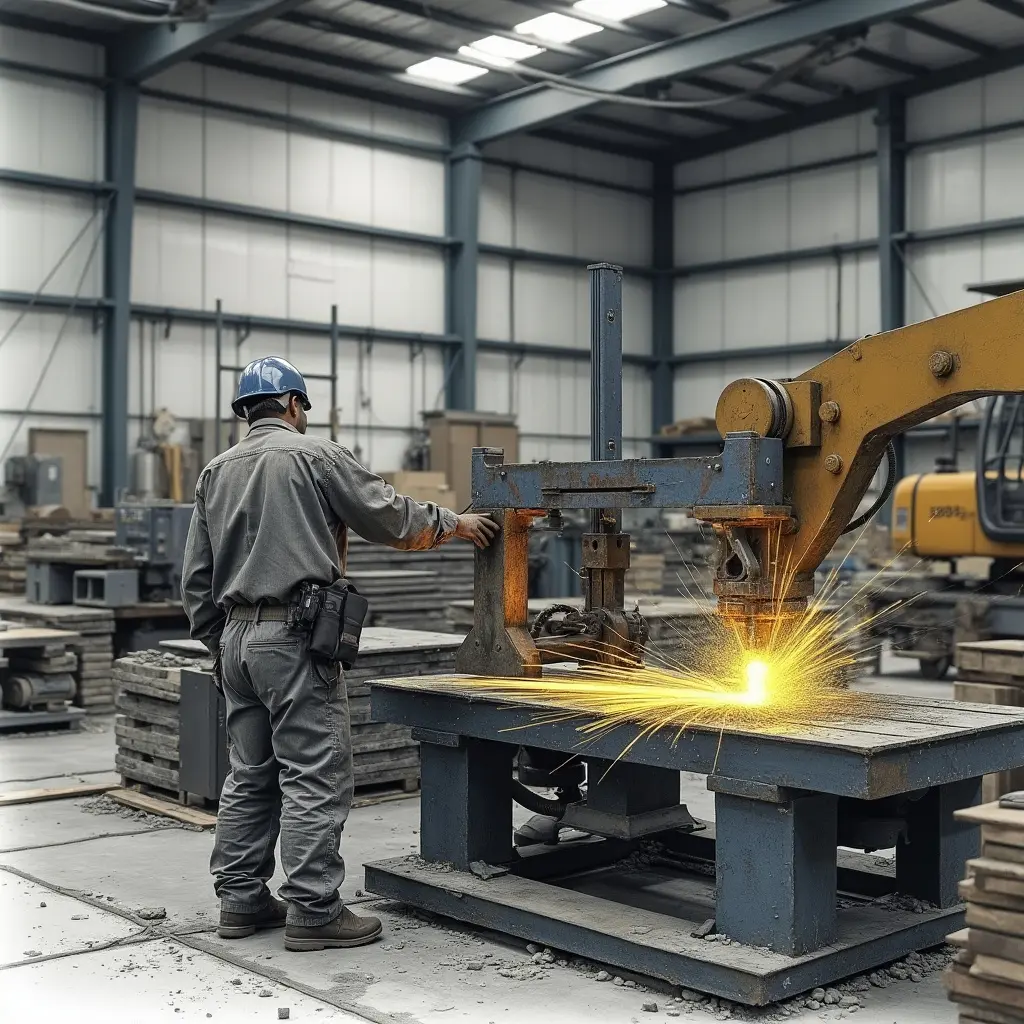CAPITAL GOODS

The Use of Alloy Steels in Capital Goods
Steel Rounds are a key component of the Capital Goods Industry. The capital goods industry requires various Engineering Steels, such as rounds, flats, squares, rectangles, and bright bars, which we manufacture.
This blog explores the composition, properties, and applications of alloy steels, with a focus on their use in capital goods.
Composition and Types of Alloy Steels
Alloy steels are iron-based materials with added elements to improve their mechanical or physical properties. These elements can include nickel, chromium, molybdenum, vanadium, and silicon. The composition of
alloy steel can range from a minimum of 1% to as high as 30% of these alloying
elements.
Low Alloy Steels
Low alloy steels contain
small amounts of alloying elements, typically less than 5% by weight. They are
known for their strength, toughness, and affordability, making them suitable
for various applications.
High Alloy Steels
High alloy steels
contain larger amounts of alloying elements, often exceeding 12%. These steels are known for their exceptional mechanical properties, including high strength, corrosion resistance, and heat tolerance.
Properties of Alloy Steels
Strength and Toughness
Alloy steels offer enhanced tensile and yield strength, making them suitable for heavy-load applications. This strength is crucial for the manufacturing of capital goods that need to withstand significant stress and strain.
Heat and Impact Resistance
Alloy steels maintain their mechanical properties at elevated
temperatures, making them ideal for high-temperature service applications. They
are also capable of withstanding significant impact and shock loading, which is
essential for machinery and equipment used in harsh environments.
Wear Resistance
Alloy steels exhibit superior resistance to wear and abrasion,
extending the service life of components used in demanding conditions. This
property is particularly important for capital goods that are subject to
constant friction and wear.
Machinability and Ductility
Alloy steels have better machinability and ductility compared to
other types of steel. This makes them easier to shape and form, which is
beneficial in the manufacturing process of complex machinery and equipment.
Applications in Capital Goods
Automotive Industry
In the automotive industry, low alloy steels are used for manufacturing various components such as engine parts, transmission gears, chassis, and suspension systems. These components require materials that can withstand high stress and temperatures.
Construction and Infrastructure
Low alloy steels are extensively used in construction for structural components such as beams and columns. Their strength and durability make them ideal for building infrastructure that needs to support heavy loads and resist environmental factors.
Oil and Gas Industry
In the oil and gas industry, low alloy steels are used for pipelines, well casings, and drilling equipment. These applications require materials that can resist corrosion and stress cracking in harsh environments.
Heavy Machinery and Equipment
Low-alloy steels are commonly used in the fabrication of heavy machinery and equipment, including mining machinery, agricultural equipment, and industrial machinery. Their strength and wear resistance is crucial for the performance and longevity of these machines.
Aerospace Industry
In the aerospace sector, high-alloy steels are crucial for manufacturing components that require high strength-to-weight ratios and resistance to extreme temperatures and corrosive environments. These
properties are essential for the safety and efficiency of aerospace applications.
Energy Sector
High alloy steels are vital in energy production, particularly in exploration and gas. They are used in drilling equipment, pipelines, and offshore platforms due to their
resistance to corrosion and stress cracking.
Medical and Pharmaceutical Sectors
High-alloy steels are increasingly being adopted in the medical and pharmaceutical sectors for
manufacturing surgical instruments and implants. Their corrosion resistance and biocompatibility makes them suitable for these applications.
Future Trends and Innovations
The future of alloy steel development is focused on creating new alloy compositions that
harness the synergistic effects of existing elements while incorporating novel additions. Advanced computational models and simulations are being used to predict and optimize the properties of these innovative alloys.
Cutting-edge manufacturing processes such as additive manufacturing (3D printing) and
precision casting is also being explored to improve the efficiency and quality of alloy steel production. Additionally, there is an emphasis on sustainable practices, including the development of eco-friendly production processes and the use of recycled materials to minimize environmental impact.
Conclusion
Alloy steels are indispensable in the manufacturing of capital goods due to their exceptional properties and versatility. From automotive and construction to aerospace and medical
applications, alloy steels provide the strength, durability, and resistance needed to meet the demands of various industries. As technology advances, the development of new alloy compositions and sustainable practices will continue to drive innovation in this field.
By understanding the composition, properties, and applications of alloy steels, industries can
better leverage these materials to enhance the performance and longevity of their capital goods.
Kindly contact Ashish Gupta on +91 9987364999 or email at sales@ambhe.com for your requirements